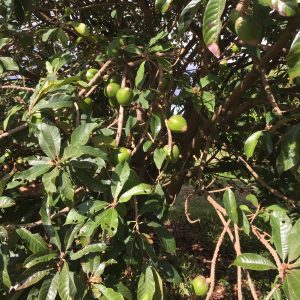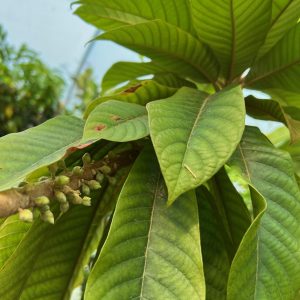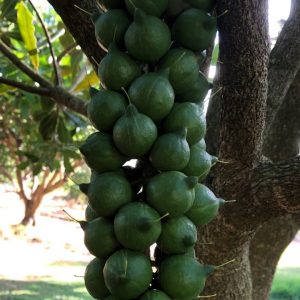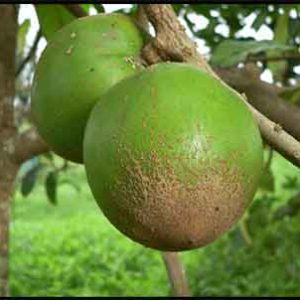Pouteria viridis
Green sapote
Origin
The tree is indigenous to the highlands of Central America.
Climate
This is really a sub-tropical species, as it grows in equatorial regions but is adapted to cooler conditions up to altitudes of 2100m. It does not do well in hot, tropical lowland areas. Mature trees can only just tolerate frosts, whereas young trees may be killed.
Plant Description
It is an evergreen, laticiferous tree, 8-15m tall. Young stems are covered with brown hairs and its dark green leaves are clustered towards the shoot apices. In sub-tropical climates it is often semi-deciduous.
Relatives
Sapotaceae Family. It is related to mamey sapote, sapodilla, canistel and abiu.
Soils
Slightly acid soils and well-distributed rainfall are best. There is little tolerance for poorly drained soils.
Propagation
By seed or grafting for selections. Faster germination can be achieved by cracking the hard seed coat before sowing. Inarching may be more successful than other ways of grafting.
Cultivars
None established. There is considerable variation in fruit quality between trees.
Flowering and Pollination
Pinkish-white, tubular flowers are borne in fascicles of 2-5. Flowers seem to be self-compatible and insect pollinated.
Cultivation
Irrigation during dry spells is important; the tree may defoliate otherwise. Do not put mulch too close to the trunk, as fungus and root rots can occur. No properly conducted studies have been reported on fertiliser needs, but similar protocols to citrus seem to be productive.
Wind Tolerance
Not known.
Pruning
Pruning needs are minimal and mainly focussed on containing tree size.
The Fruit
Fruit is ovoid to ellipsoid with a pointed apex, 5-15cm long. It has very thin olive-green coloured peel which becomes almost translucent at maturity with a brownish-orange flesh showing through. When ripe the flesh is smooth, sweet and coloured orange-red with 1-2 brown seeds 2-5cm long.
Fruit Production and Harvesting
Seedlings have a juvenility period of several years and may then flower for 1-2 years before fruit are held through to maturity. Subsequently, more than 100 fruit/tree may be produced. Bloom is normally in late winter early spring, with harvest 12 or more months later depending on climate. Fruit normally take 1-2 weeks to fully ripen after picking.
Fruit Uses
The sweet pulp is generally eaten fresh but is also preserved and used in desserts. It is a good source of vitamin C and is high in carbohydrates (25-30%) and antioxidant activity.
Pests and Diseases
No major problems. Phytophthora is potentially a problem.
Comments
Green sapote is not only judged by many to be better than its close relative the mamey sapote, but in addition, to be one of the best of all the Sapotaceaous fruit.



